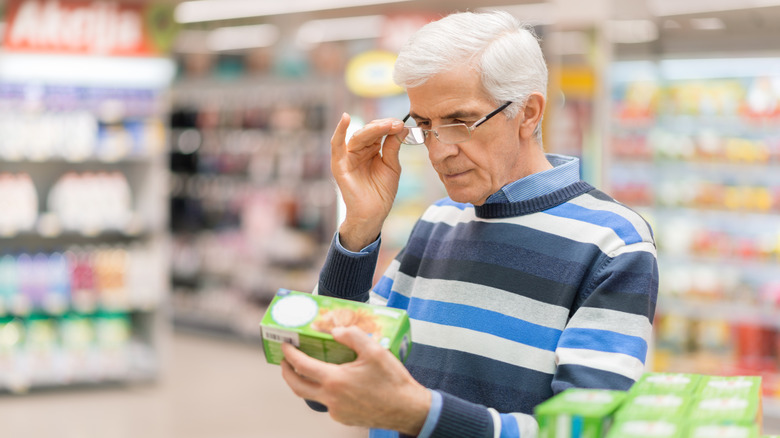What You Need To Know About Artificial Coloring In Food
Food coloring — that stain-your-fingertips, gingerbread-house-decorating, sugar-cookie-highlighting, frosting-fancify-ing drop of rainbow that adds fun and color to treats and sweets — has long been argued as unhealthy and potentially harmful. Unfortunately, artificial coloring can be found in more than just tasty treats. Food dye is in all types of food, from bread, to pickles, to wine, and almost everything in between.
While adding naturally sourced color to everything from makeup to hair was done for centuries, artificial dye was first developed in 1856 by British scientist William Henry Perkin, according to the U.S. Food and Drug Administration (FDA). As more and more of these dyes were discovered and used to color ingredients, the U.S. Department of Agriculture began overseeing and investigating their use, beginning in the 1880s. From there, additional laws were put in place to protect Americans from the potential dangers of these color additives.
Amendments to laws were updated in the early 1900s, 1920s, and 1930s, but it was the Color Additive Amendments of 1960 that mostly likely caused the modern discussion around the harm of artificial food coloring. As the FDA notes, these were implemented after a number of children got sick after eating a candy with orange coloring. Another contributing factor was the 1959 "cranberry scare," according to the New Yorker. At the time, canned cranberries were shown to have high ingredients of herbicides, so rules were put in place regarding cancer-causing additives in artificial colors.
Will warning labels work?
With a history so full of scares, triggers, and amendments, it's no wonder that the question of artificial color safety is still one we ask — especially in regard to consumption by children. According to the FDA, in 1970, pediatrician Dr. Benjamin Feingold claimed there was a link between color additives and childhood behavior — in particular, hyperactivity. This caused the government agency to do a full analysis and continue its research through the '80s. Again, in 2007, research done in the U.K. by the University of Southampton showed a potential link between certain additives and preservatives and hyperactivity in children (via National Library of Medicine). However, an independent study found there while there was support for the Southampton findings, more testing needed to be done. In 2010, the European Union began requiring warning labels for all foods with artificial ingredients, but according to the FDA, the U.S. questioned the World Trade Organization regarding the use of the labeling, saying it was based on inconclusive study results.
Recurring studies on the dangers of artificial coloring and even proposed government legislation in some states have only contributed to the boom of natural and organic food, notes NBC News. In a study done by Technavio, the market for organic packaged food is projected to increase by $22 billion from 2021 to 2026 (via PR Newswire). According to a study by Blue Weave Consulting, increasing health awareness, rising food related illnesses, and a growing concern for pesticides in food and farming have all contributed to a more natural and less artificial food landscape.
Food additive safety still in review
The truth about artificial food coloring is that to completely ban these types of ingredients from our food is no small feat. Large companies like Mars, General Mills and Kellogs, which once set goals to completely remove artificial ingredients (via USA Today), have yet to meet their goals or have since revised them completely, according to FoodDive.
Even though organizations like the Center for Science in the Public Interest (CSPI) have, since 2008, repeatedly called on the FDA to ban additives and preservatives, research is still being conducted. Until the evidence is overwhelming and conclusive, artificial food dyes and additives will still be listed among the ingredients of your food products.
The good news is that with vast information and a wealth of resources surrounding this topic, both in the U.S. and abroad, as well as an increase in the availability of naturally derived food additives and organic packaged food, consumers have the ability to make well-informed decisions on what is in their food and, ultimately, in their body.


